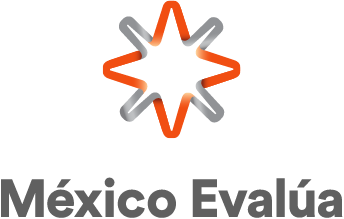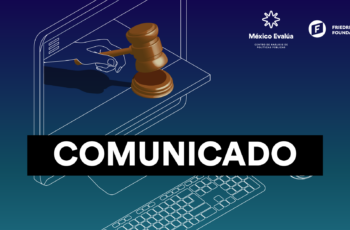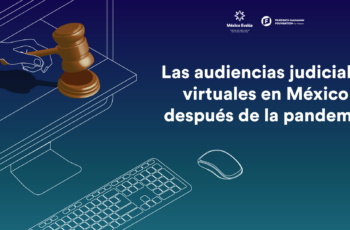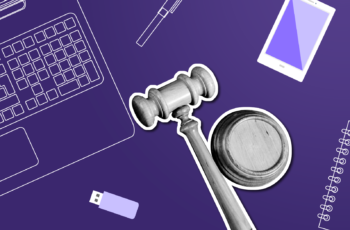Technology for a more humane justice
By Laurence Pantin (@lpantin) and Sandra Escamilla (@sandritaeceron) | Animal Político
Recently, officials of the Federal Judiciary and litigants reported on social networks various failures in the operation of the site of the online services of the Council of the Judiciary, as well as the Comprehensive File Monitoring System (SISE for its acronym in Spanish). Between memes and screenshots, officials evidenced the impossibility of entering the system or the slowness to upload agreements or consult them, among other problems. Although the Federal Judiciary Council subsequently announced a new functionality for its platforms, which included an interactive interface for electronic files – which partially explained all these failures, since it can be assumed that it was in a testing and adjustment period – This event shows a reality: digital tools have become essential in the day to day of officials and practitioners. For this reason, the demand on its operation is maximum.


This paradigm shift has not only occurred at the federal level, but also at the local level. In other words, the use of technological tools has grown rapidly in local judicial powers in the last 18 months, as a result of the pandemic. From the creation of appointment systems to file lawsuits and promotions, to electronic courts and online courts, some judicial powers have implemented digital solutions with the aim of resuming their services in the face of health restrictions.
Despite this renewed interest in the digitalization of justice, the road has not been easy for the judiciary, as there are various challenges that prevent them from going beyond the simple digital transfer of files, for example. And it is one thing to ‘install’ tools and another very different thing is to undertake technological transformations that allow us to revolutionize the way in which justice is imparted. Or one more step here: that these tools are really functional and that users are willing to use them. Understanding this difference is vital if the judiciary wants to be more relevant to citizens in an increasingly complex and changing scenario.
In response to this enormous challenge, at México Evalúa we created Guidelines for technological transformation in the delivery of justice, which bring together successful experiences by judicial powers and other justice institutions that have embarked on technological transformation processes; in other words, they have managed to go beyond just transferring to the digital plane what is already done in person or on paper, and have optimized their processes with the help of technology, using a user-centered approach.
It should be noted that the methodology centered on users is not new, since it is usually used in areas such as design, architecture and other disciplines with close contact with the end user. Unlike other methodologies, where solutions are built from the point of view of experts, this approach builds them taking into account the perspective of the people who are going to use the tools, emphasizing not only those who provide justice, but those who accesses it. This allows everyone to be able to use these tools, regardless of whether they are someone with a disability, elderly or with little computer skills.
To achieve this level of accessibility, an exercise that allows knowing and taking into account the characteristics, needs, limitations and points of view of the users is required. To that end, the methodology proposes identifying the perspective of the users, devising solutions, creating prototypes from the most promising ideas and refining them until they can be scaled and, finally, evaluating their impact. We believe that this innovative approach has the potential to transform `justice systems as it focuses on creating useful tools and interventions that have a positive impact for the communities they are intended to serve.
Point of departure and arrival: the people
Thus, our study is the product of a collective learning systematization process that serves as a roadmap for the judiciary, and helps reducing the learning curve when undertaking a process of this magnitude. Along the way, we recognize the particular challenges of the judiciary and provide recommendations to address them. For example, one of the great obstacles that judicial powers face is the lack of budget, which often prevents them from thinking of a long-term technological development plan.
One way to overcome this challenge is to develop a multi-stage plan that allows gradual investment. In the study, we recount the innovative strategies that judicial powers have carried out to face this obstacle, such as the co-creation of open-source technological tools –that is, without licensing costs–, to the search for points of coincidence with the social programs of the executive powers, to obtain extraordinary resources.
Undoubtedly, the judicial powers are in a key process, in which it is necessary to take advantage of the context to promote technological development from and for people. This last point is not anecdotal, because the worst thing that can happen to a judiciary, apart from falling behind in technological development, is to invest in digital tools that do not serve the people for whom they were intended.









